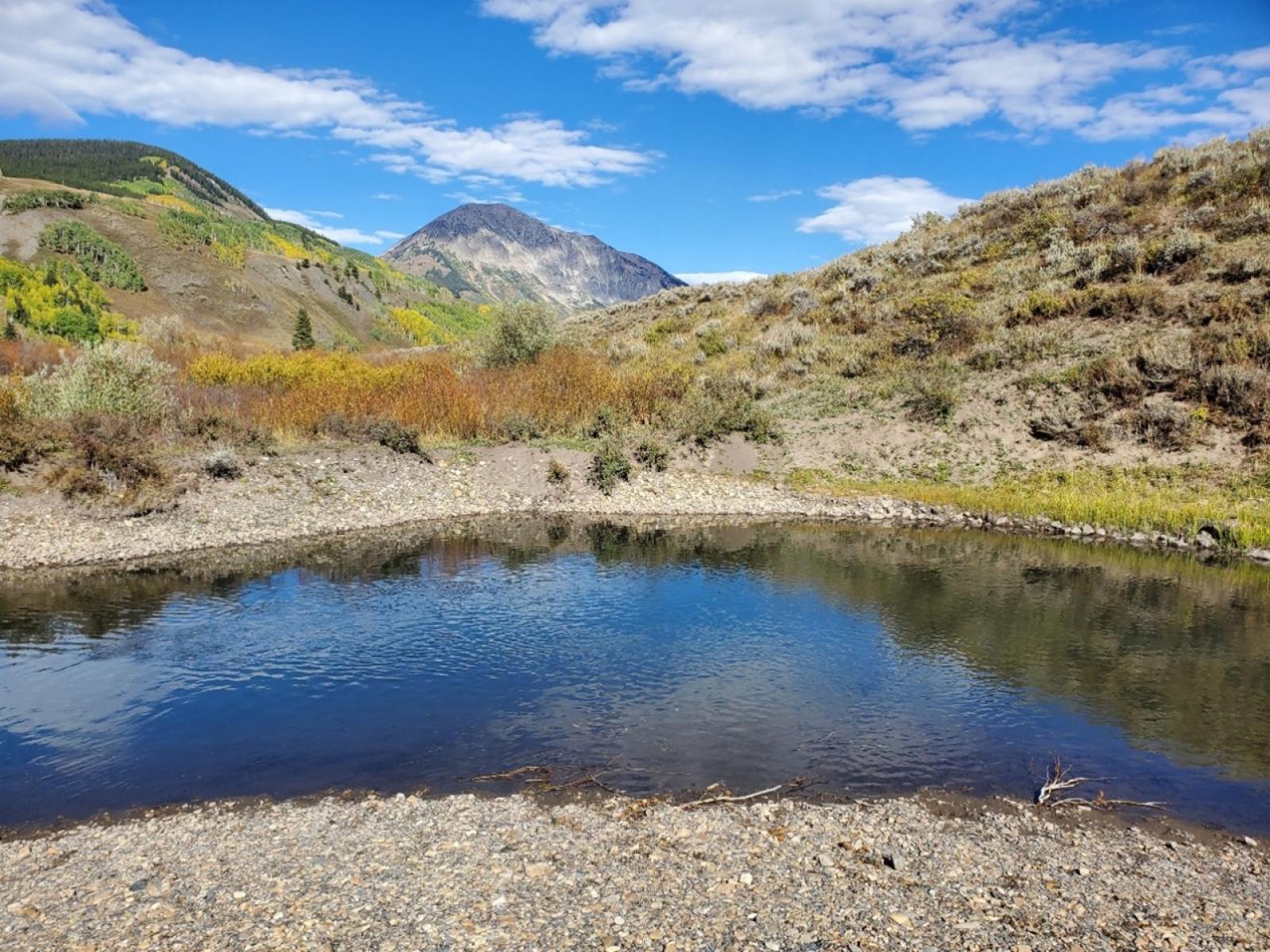Riverbed Sediment Activity Is Influenced by Organic Carbon Concentration and Organic Matter Diversity
Continental-scale analyses of river sediments shows that microbial respiration is primarily constrained by organic carbon concentration, with additional influences from organic matter diversity

A view of East River in Crested Butte, Colorado, USA
(Image by Sam Pierce | SLAC National Accelerator Laboratory; Rocky Mountain Biological Laboratory)
The Science
Riverbed sediments influence river corridor metabolism and global carbon and nutrient cycling. Recent work highlights the role that organic matter (OM) chemistry plays in controlling microbial respiration rates, but a deeper understanding of the relationships between respiration rates and OM chemistry is needed. A recently developed hypothesis states that aerobic respiration rates will decrease with increasing OM molecular diversity. We tested this hypothesis using publicly available data across the United States from crowdsourced samples taken by the Worldwide Hydrobiogeochemical Observation Network for Dynamic River Systems (WHONDRS) consortium. Our analyses rejected the hypothesis, and in turn showed that organic carbon (OC) concentration imposes a primary constraint over hyporheic zone respiration, with additional potential influences from the number of unique OM molecules (i.e., OM richness as a measure of diversity).
The Impact
The results from this work reject the hypothesis of any direct relationship between respiration rate and OM richness but still revealed an influence of OM richness after controlling for water‑soluble OC concentration. We therefore propose a conceptual model where influences of OM richness over respiration rates in hyporheic zone sediments are likely modulated by OC concentration. Under this model, if OM molecular richness is high relative to OC concentration, respiration is expected to be minimized. This is because under these conditions there is less probability for a microbe to encounter the same type of molecule and the costs of using any specific type of molecule may outweigh the energy gains. This is important because it suggests that in most cases, additional controls over respiration drive respiration below its potential maximum. Uncovering additional controls is a key area for future work. Current results could be useful for guiding models both towards and away from features and processes that need to be represented, to better enable predictions of river corridor biogeochemical function.
Summary
Rivers are fundamental components of the Earth system, and their biogeochemistry can be heavily influenced by processes in subsurface zones immediately below the riverbed, referred to as the hyporheic zone. Within the hyporheic zone, OM fuels microbial respiration, and OM chemistry heavily influences aerobic and anaerobic biogeochemical processes. The link between OM chemistry and respiration has been hypothesized to be mediated by OM molecular diversity, whereby respiration is predicted to decrease with increasing diversity. Here we test the specific prediction that aerobic respiration rates will decrease with increases in the number of unique organic molecules (i.e., OM molecular richness, as a measure of diversity). Our continental-scale analyses rejected the hypothesis of a direct limitation of respiration by OM molecular richness. Rather, we found that OC concentration imposes a primary constraint over hyporheic zone respiration, with additional potential influences of OM richness. These results indicate that maximum respiration rates may be governed primarily by OC concentration, with secondary influences from OM richness. Results also show that other variables often suppress respiration rates below the maximum associated with the richness-to-concentration ratio. An important focus of future research will identify physical (e.g., sediment grain size), chemical (e.g., nutrient concentrations), and/or biological (e.g., microbial biomass) factors that suppress hyporheic zone respiration below the constraint boundaries observed here.
PNNL Contact
James Stegen, Pacific Northwest National Laboratory, James.stegen@pnnl.gov
Funding
This work was supported by the River Corridor Science Focus Area at Pacific Northwest National Laboratory which is supported by the U.S. DOE, Office of Biological and Environmental Research (BER), Environmental System Science (ESS) Program. PNNL is operated by Battelle for Department of Energy (DOE).
Published: July 6, 2023
Stegen, J. C., Garayburu-Caruso, V. A., Danczak, R. E., Goldman, A. E., Renteria, L., Torgeson, J. M., and Wells, J. R.: Maximum Respiration Rates in Hyporheic Zone Sediments are Primarily Constrained by Organic Carbon Concentration and Secondarily by Organic Matter Chemistry, Biogeosciences, 20, 2857–2867, https://doi.org/10.5194/bg-20-2857-2023